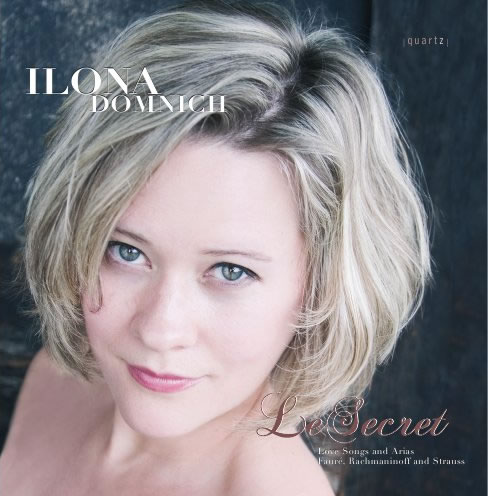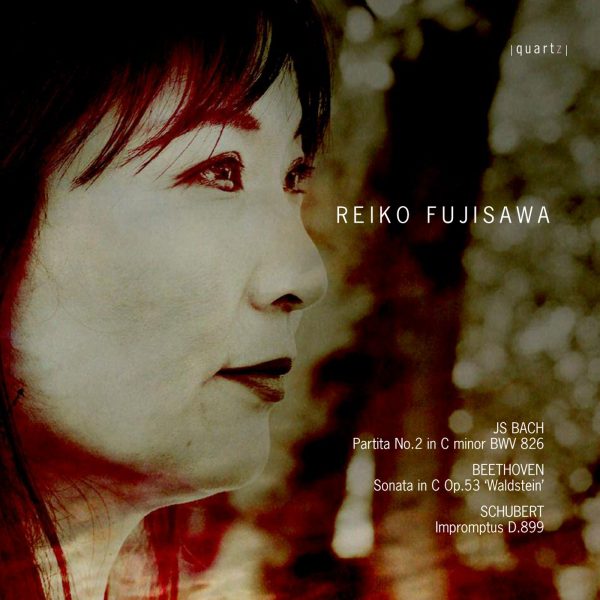Olwen Morris: Sonatas, Variations, Impromptus
Price range: £7.99 through £14.99
Olwen Morris studied under Vlado Perlemuter pupil of Cartot and friend of Faure and Ravel, and has given many solo BBC recitals and has played the major concert halls.
Beethoven’s late piano sonatas Op.109, Op 110 lead us through two different sound journeys. We experience human feelings and thoughts – optimism, tragedy, calm, anger, resignation and struggle. Beethoven’s Six Variations are concisely constructed but kaleidoscopic in effect, with variety of keys, titles and styles Mendelssohn was one of several well-known composers including Schumann and Liszt who were asked to write a work for inclusion in an album of works, the proceeds of which were used to erect a statue to Beethoven.
Schubert’s two sets of impromptus contain some of his most popular piano works. Faure’s Nocturne No.6 was written after a six year break from writing for the piano and was a favourite work of Cortot.
The six works here by Debussy and Ravel were written between 1903 and 1905 and all bear descriptive titles and take us to a another dimension in sound experience- more tactile and sensual.
About This Recording
CD 1
Beethoven Sonata No.30 in E Op.109
Beethoven Sonata No.31 in A flat Op.110
Beethoven’s late piano sonatas Op.109 (1820) and Op.110 (1821) lead us through
two different sound journeys. We experience human feelings and thoughts, – optimism, tragedy, calm, anger, resignation, struggle. Sometimes the changes are sudden, as in the interrupted improvisatory style of the Op.109 opening movement; others evolve slowly. Each sonata ends positively. Op.109 triumphs in the euphoric final variation before its theme returns in simplicity. The fugue of the finale of Op.110 gradually finds new life and meaning after the grief of the Arioso.
Beethoven used conventional forms (sonata form, variations, fugue, scherzo) to achieve extraordinary results in the expression and architecture of these works. The appropriation of these forms in such a new and exploratory way leads one to pose the question – would he have done this so remarkably had he not been deaf.
The first movement of Op.109 alternates between sections of Vivace and Adagio expressivo. The direction ‘attacca’ follows the final quiet chord – and leads into the second movement’s turbulent Prestissimo. The third movement is significantly headed in German, “Gesangvoll, mit innigster Empfindung” – (with innermost feeling). Again, in the penultimate sonata Op.110, the second scherzo type movement follows an expressive first movement. The last movement, however, breaks all stylistic traditions with its several sections of fugue, recitative/Arioso dolente and final fugue.
Beethoven 6 Variations on an original theme in F Op.34
Beethoven’s Six Variations on an original theme in F Op.34 (1802) are concisely
constructed, but kaleidoscopic in effect, with variety of keys, titles and styles. Though the work tends to look back towards the eighteenth century, the personality of Beethoven is ever present here. By 1802 he knew that he was going deaf. Many of his piano sonatas were already written but the majority (seven) of his symphonies were yet to come.
Mendelssohn Variations Sérieuses Op.54 (1841)
Mendelssohn was one of several well known composers including Schumann and
Liszt who were asked to write a work for inclusion in an album – the proceeds of which were to be used to erect a monument to Beethoven. This set of variations was the result and they have remained popular ever since. All seventeen variations are in D minor.
CD 2
Schubert four impromptus Op.90 D.899
Impromptu is the useful title given to a short instrumental composition common in
the nineteenth century. Schubert’s two sets of impromptus (D.899 and D.935) contain some of his most popular piano works, though little is known of the circumstances of their composition. These four impromptus were published in part in 1827 – the year Beethoven died and the year before Schubert’s own tragically early death at the age of thirty one. Each is an outpouring of Schubert’s expressive soul. The repetitive use of motifs which pass through modulations and tonality changes, give a chiaroscuro effect. The lyrical sections compare with the unsurpassed beauty of his songs.
Number one in C minor is least known and longest. Its opening solitary melancholy melody develops (by variation) into a darker often dramatic style. Its insistent triplet rhythm is reminiscent of the song Erl King written when he was only seventeen. The faster second and fourth impromptus are built on repetitive scales or broken chord patterns with passionate contrasting middle sections. The third and much loved G flat impromptu suffered key and time changes by an enthusiastic publisher hoping to make easier for an amateur player but Schubert’s original version is now the accepted one.
Fauré Impromptu No.2 in F minor Op.31 (1883)
Light and airy in texture with fast moving arpeggios in tarantella rhythm, there are no
dark shadows here – rather a sense of the ease and charm which reflected Fauré’s own personality in his early life.
Fauré Nocturne No.6 in D flat Op.63 (1894)
was written after a six year break from composing for the piano. A favourite work of
the great pianist Cortot, it moves from its beautiful lyrical opening towards unquietness, then the passion and eloquence of the climax before returning to a calm ending. Its chromatic and sometimes unresolved harmonies anticipate the direction French music was taking.
The six works here by Debussy and Ravel were written between 1903 and 1905 and all bear descriptive titles. They take us to another dimension in sound experience – more tactile and sensual. Full use is made of the modern piano’s sonorities, and of the latest performing techniques to achieve new effects and stir the listener’s imagination in an impressionistic way. The use of the whole tone and other scales moved their music far away from romantic harmony and style.
Debussy L’Isle Joyeuse (1904)
L’Isle Joyeuse, the joyous island sacred to Venus, was inspired by Watteau’s painting
L’Embarquement pour Cythère. Technically demanding for the performer, it gathers momentum and stature as it moves towards its exciting finish.
Debussy Estampes – ‘Engravings’ (1903) No.1 Pagodes
Though often described as impressionist, there are also strong influences of the Orient and the exotic in Debussy’s music. Traditional Oriental melody in pentatonic scale is heard in Pagodes, and the sound of the Javanese gamelan, and later the high repeated bells in the right hand, further evoke the Chinese/Japanese moods.
Debussy Estampes No.2 La soirée dans Grenade
Manuel de Falla complimented Debussy on this successful evocation of Spain, La soirée dans Grenade. With Arabic scale and guitar like rhythmic effects, help to create Grenada’s atmosphere.
Debussy Estampes No.3 Jardíns sous la pluie
Jardíns sous la pluie is a compelling picture of Normandy gardens on a day of light showers and heavy downpours. Two French folk melodies can be heard, ‘nous n’irons plus aux bois’ and ‘dodo, l’enfant do’.
Ravel Miroirs (1905) Oiseaux tristes
Une barque sur l’ocean
While much is known of Debussy’s turbulent personal life, Ravel was a more private and reserved person. There must have been disappointments when in 1905 he failed yet again in the prestigious Prix de Rome competition, but it was in 1905 that he composed Miroirs, – the set of five piano pieces described by Michael Kennedy as epoch making.
No.2 Oiseaux tristes – mimics and echoes birdsong vividly and intensely with haunting effect.
No.3 Une barque sur l’ocean. As a pianist himself, Ravel knew how to use the piano to full effect. The cascading layers of sounds and chords covers the entire span of the keyboard and the instrument’s huge dynamic range, to describe the boat rising and falling on the ocean’s ever-moving waters.
Track Listing
-
CD 2
- Beethoven Sonata in E Major Op.109 - i. Vivace, ma non troppo - Adagio espressivo
- Beethoven Sonata in E Major Op.109 - ii. Prestissimo
- Beethoven Sonata in E Major Op.109 - iii. Andante, molto cantabile ed espressivo
- Beethoven Sonata in A flat Op.110 - i. Moderato cantabile, molto espressivo
- Beethoven Sonata in A flat Op.110 - ii. Allegro molto
- Beethoven Sonata in A flat Op.110 - iii. Adagio, ma non troppo - Fuga - Allegro ma non
- Beethoven 6 Variations on an Original Theme in F Op.34 - Theme
- Beethoven 6 Variations on an Original Theme in F Op.34 - Var. i.
- Beethoven 6 Variations on an Original Theme in F Op.34 - Var. ii.
- Beethoven 6 Variations on an Original Theme in F Op.34 - Var. iii.
- Beethoven 6 Variations on an Original Theme in F Op.34 - Var. iv.
- Beethoven 6 Variations on an Original Theme in F Op.34 - Var. v.
- Beethoven 6 Variations on an Original Theme in F Op.34 - Var. vi.
- Mendelssohn Variations Serieuses Op 54 - Theme
- Mendelssohn Variations Serieuses Op 54 - Var. i.
- Mendelssohn Variations Serieuses Op 54 - Var. ii.
- Mendelssohn Variations Serieuses Op 54 - Var. iii.
- Mendelssohn Variations Serieuses Op 54 - Var. iv.
- Mendelssohn Variations Serieuses Op 54 - Var. v.
- Mendelssohn Variations Serieuses Op 54 - Var. vi.
- Mendelssohn Variations Serieuses Op 54 - Var. vii.
- Mendelssohn Variations Serieuses Op 54 - Var. viii.
- Mendelssohn Variations Serieuses Op 54 - Var. ix.
- Mendelssohn Variations Serieuses Op 54 - Var. x.
- Mendelssohn Variations Serieuses Op 54 - Var. xi.
- Mendelssohn Variations Serieuses Op 54 - Var. xii.
- Mendelssohn Variations Serieuses Op 54 - Var. xiii.
- Mendelssohn Variations Serieuses Op 54 - Var. xiv.
- Mendelssohn Variations Serieuses Op 54 - Var. xv.
- Mendelssohn Variations Serieuses Op 54 - Var. xvi.
- Mendelssohn Variations Serieuses Op 54 - Var. xvii. CD 2
- Schubert 4 impromptus Op. 90 D899 - No.1 in C minor
- Schubert 4 impromptus Op. 90 D899 - No. 2 in E flat Major
- Schubert 4 impromptus Op. 90 D899 - No.3 in G flat Major
- Schubert 4 impromptus Op. 90 D899 - No.4 in A flat Major
- Faure Impromptu No.2 in F minor Op.31
- Faure Nocturne No.6 in D flat Op. 63
- Debussy L'Isle Joyeuse
- Debussy Estampes - No.1 Pagodes
- Debussy Estampes - No.2 La Soirée dans Grenade
- Debussy Estampes - No.3 Jardins Sous la Pluie
- Ravel Miroirs - No.2 Oiseaux Tristes
- Ravel Miroirs - No.3 Une Barque sur L'Océan




